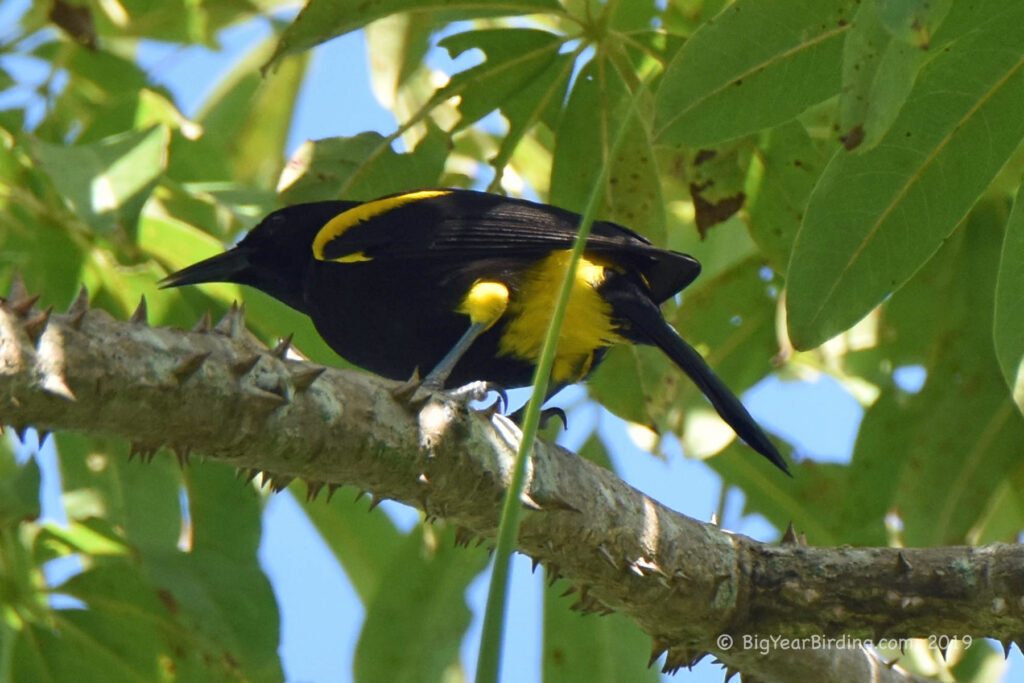The Puerto Rican Oriole, also known as Icterus portoricensis, is a medium-sized bird species that belongs to the family Icteridae. These birds are native to Puerto Rico and are found primarily in the eastern and southern regions of the island. Puerto Rican Orioles are known for their striking coloration and unique songs, making them a popular species for birdwatchers and wildlife enthusiasts alike.
The Puerto Rican Oriole measures approximately 9.5 inches in length and weighs between 1.6 to 2.1 ounces. They have a distinctive black and yellow coloration with a black head, back, and tail, and bright yellow underparts. Females are similar in appearance to males, although they tend to be slightly duller in coloration.
One of the distinguishing field marks of the Puerto Rican Oriole is its long, pointed bill, which is used to forage for insects, fruit, and nectar. These birds are also known for their unique songs, which consist of a series of whistles and trills. The males are particularly vocal during the breeding season, using their songs to attract mates and defend their territories.
The Puerto Rican Oriole is considered a non-migratory bird, meaning that it does not undertake long-distance migrations. However, these birds may move short distances within their range in search of food or suitable nesting sites. Puerto Rican Orioles are found in a variety of habitats, including forests, woodlands, and urban areas.
Like many bird species, the Puerto Rican Oriole faces a number of threats in the wild. Habitat loss and fragmentation, as well as competition from invasive species, are among the primary threats to these birds. Conservation efforts, including habitat restoration and the control of invasive species, are underway to help protect the Puerto Rican Oriole and other native bird species on the island.

